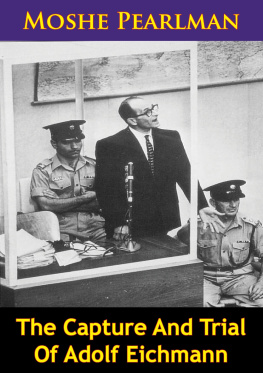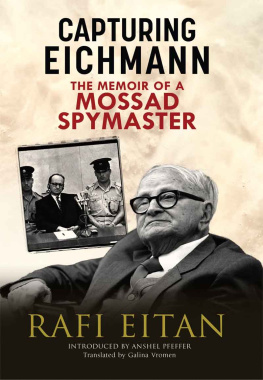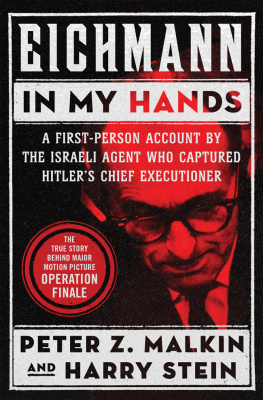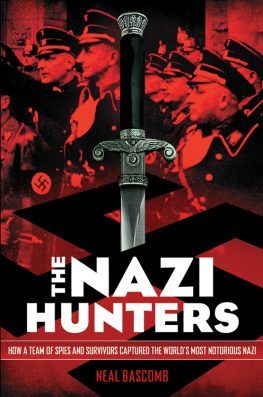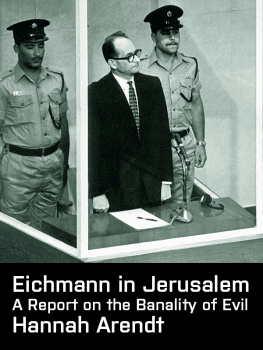

This edition is published by PICKLE PARTNERS PUBLISHINGwww.picklepartnerspublishing.com
To join our mailing list for new titles or for issues with our books picklepublishing@gmail.com
Or on Facebook
Text originally published in 1963 under the same title.
Pickle Partners Publishing 2015, all rights reserved. No part of this publication may be reproduced, stored in a retrieval system or transmitted by any means, electrical, mechanical or otherwise without the written permission of the copyright holder.
Publishers Note
Although in most cases we have retained the Authors original spelling and grammar to authentically reproduce the work of the Author and the original intent of such material, some additional notes and clarifications have been added for the modern readers benefit.
We have also made every effort to include all maps and illustrations of the original edition the limitations of formatting do not allow of including larger maps, we will upload as many of these maps as possible.
THE CAPTURE AND TRIAL OF ADOLF EICHMANN
BY
MOSHE PEARLMAN
TABLE OF CONTENTS
Contents
1PRELUDE TO CAPTURE
THE FIRST DAY OF SPRING WAS A fateful day in the life of Adolf Eichmann. On that day, in 1935, he got married. On that day, in 1960, the seal was put on the plan for his capture.
On March 21, 1960, Eichmann rose early, as usual, pottered about the small, stark, mud-colored brick house in the dreary San Fernando suburb of Buenos Aires where he lived with his wife and three of his four sons, shaved carefully, washed in a primitive bathroom which lacked running water, dressed and sat down to a German-style breakfast. At 6:45 he left the house, on whose door was a card bearing the name Klement. It was now as Seor Klement that he walked the two hundred yards to the nearest bus stop to wait for one of the three buses he would be taking to reach his place of work, the Mercedes-Benz factory in Surez, at the other, southeastern, end of the city. When he reached the factory, he clocked in with a card made out in the name of Ricardo Klement.
As he left the house, his face and every movement were watched through powerful binoculars by a young man half his age whom we shall call Gad.
Gad was seated behind the drawn blind of a window in a house situated four hundred yards from, and offering an uninterrupted view of, the house marked Klement. Two small holes in the blind, looking like moth holes from the outside, gave vision for the lenses of binoculars. He watched the house, as he had watched it now every morning for several weeks, saw Seor Klement open the door, turn to say good-bye to someone inside, close the door, and then walk down the dirt path to the edge of the cottage grounds, ringed by a chicken-wire fence. Gad followed him with his eyes as he walked toward the bus stop and stayed with him until the bus pulled up. He left his seat at the window only when the bus was out of sight. He then went to the telephone to make a two-word call. Yigal? he queried; and then, when he received the affirmation, he added, Karagil. The word is Hebrew for as usual. He hung up and went to make himself some coffee.
Yigal, at the other end, after hearing from Gad, put through his own call to Dov. Beseder, he saidOkay.
Dov had a room not far from the Mercedes-Benz works. For what he had to do now, there was plenty of time. He waited thirty minutes and then, taking a special briefcase which did not look special, he casually sauntered over to the bus stop nearest the factory. He got there at 7:20. A few minutes later, a bus hove into sight. As it approached he scrutinized its destination sign, giving a slight show of disappointment for the benefit of the three persons waiting with him, to suggest that this was not his bus. The four waited as the passengers began to alight. Dov watched them all, apparently idly, as people in a waiting queue usually do. He seemed, if anything, more listless than the otherssince he would have to wait for the next bus. He stood with slightly sagging shoulders, his briefcase now in front of him resting on his body, its base supported by both hands, as if, with the long wait, he was reluctant to overburden one arm. The passengers got off, Seor Klement among them. Dov watched him. And the concealed tip of the middle finger of his right hand pressed sharply against the back of the briefcase near the bottom. As the bus pulled away, carrying the three who had waited with him, Dov continued watching Seor Klement as he walked across the road to the factory gate. Dov turned slowly so that the front of his briefcase always faced the figure of Klement. The finger on his right hand kept repeating its pressure. No one observing him could have seen the camera lens behind the small aperture of the lock on the briefcase. As Klement disappeared inside the plant, Dov lingered a few minutes at the bus stop. No one had joined him and no one appeared to be watching him. So he left and walked back to his room, telephoning Yigal that Hakol Beseder Alls well. Had there been anyone about, he would have caught the next bus as a bona fide commuter, and telephoned later to Yigal that Seor Klement had gone to work as usual.
Yigal, Gad and Dov were Israelis. All three were in their late twenties. Yigal, taller than his companions, was dark, his hair black, his brown eyes set in a long, pale face that belied an outdoor youth spent in the desert. He was the leader of the trio. The expression on his face suggested the grave young executive, heavily conscious of his responsibilities. In fact, he carried responsibilities easily, was a deft planner, and exercised command with a light touch. Gad and Dov were both of medium height, blond, and of cheery countenance; they moved through life as if they had not a care in the world. Gad was broad-shouldered, and his bronzed round face was topped by thick woolly hair. Dov, of slim build, had a mop of corn-colored spikes, which gave his healthy suntanned face a perpetually boyish air.
All three had spent many years as youthful pioneers creating a cooperative farm village in a desert outpost in southern Israel. Now they were together again, in Buenos Aires. They had come to kidnap Adolf Eichmann.
They were almost certain that the man they had kept under continual surveillance for several weeks, and who went under the name of Ricardo Klement, was Eichmann. But their certainty had to be absolute before they could proceed with the capture plan. He was living as the second husband of a lady who was known beyond doubt to have been the wife of Adolf Eichmann. Three of the four sons of the family were known beyond doubt to be the sons of Adolf Eichmann. What was not clear beyond doubt was whether Ricardo was Eichmann or whether he was indeed what he and Seora Klement claimed him to be, her second husband, whom she had married after the death of her first.
The reason for the uncertainty was that, while much was known of the activities of Eichmann during the heyday of Nazi rule, very little was known of the man himself. For he had taken good care to remain in the shadow while engaged in his grim Gestapo business. He rarely had appeared in front of the cameras. And details of his person were recorded only in the secret documents in his personal file at Nazi SS headquarters.
These particulars were in the file which Yigal had brought with him from Israel. And so he knew Eichmanns height, the color of his eyes, the color of his hair, the size of his collar, the size of his shoes, the dates of his promotions, the date of his marriage and the birth dates of his sons. He also had a photograph which had been taken in the late thirties and which had been found in 1946. But many years had now passed. He might today have no hair. His face would have undergone changes in more than twenty years, even if he had not resorted to plastic surgerya possibility which could not be ruled out. His height would have remained the same, and this tallied with the height of Klement. So did the color of his eyes. The size of his neck and feet could be checked only with physical custody; they could not help to identify him from a distance.
Next page
